
Medium Tank M2.

The plethora of machine guns arming the medium tank M2 is well illustrated in this image of the first example built. Each corner of the fighting compartment, each side of the bow, and the sponson roof antiaircraft mounts all featured a .30cal MG. Bullet deflector plates were installed over the rear fenders. The idea behind these curious additions was that the tank could roll over a trench, and the rear sponson machine guns could then fire onto the plates and the fire would deflect into the trench or the area directly behind the tank. (Picture from Development of Armored Vehicles, volume 1: Tanks.)
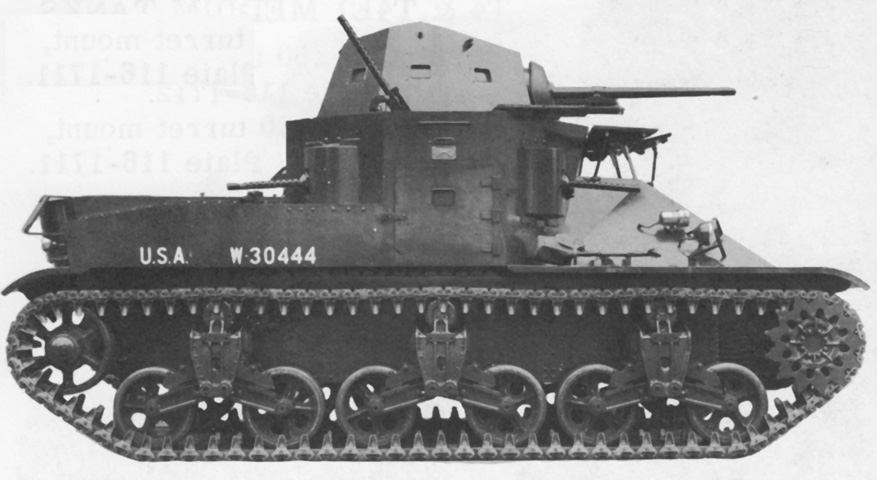
The same machine is seen from the opposite side. Note that the hatches on top of the sponsons were hinged in the opposite directions, and that the hull's front upper plate presents a smooth surface. When not in use, the antiaircraft machine guns were stowed in the brackets on the turret sides. (Picture from Weapon Mounts for Secondary Armament.)
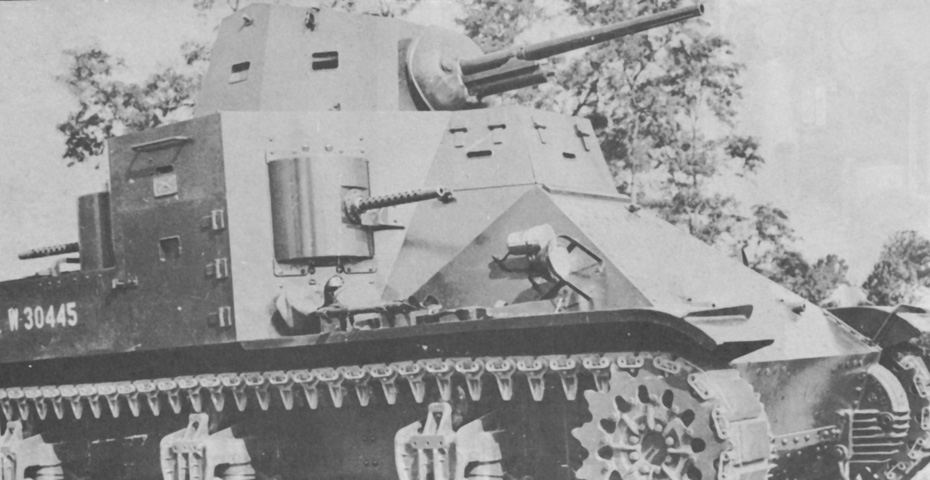
The front-right turret pistol port is open, and can be compared to the closed port in the hull side door. The brackets for stowing the antiaircraft machine guns are near the top of the turret. The sponson machine guns were mounted in 3½" (8.9cm) ball mounts that, in addition to the ~90° of traverse afforded by the rotors, provided a ~34° cone of fire. (Picture from Weapon Mounts for Secondary Armament.)

Seen from directly ahead, the ~1½" (~3.8cm) direct vision openings in the sponson machine gun rotors are visible to the machine guns' left. These apertures were equipped with plugs to seal the holes when not in use. Note the interrupter brackets below the guns to prevent firing on the vehicle. The bow machine guns are just in the frame at the bottom of the image. (Picture from Weapon Mounts for Secondary Armament.)

This is M2 number two, which was fitted with an initial-design M2A1-type turret for testing. The gun shield, apparently fitted for display, appears similar to that found on 37mm gun light tanks. Focusing on the hull, however, the smooth plates on the hull front and the pistol ports with internal shutters were characteristic of the M2. (Photo by Richard S. Eshleman.)

The engine compartment doors in the hull rear and pepperpot-style exhaust mufflers on the hull rear flanked by the bullet deflector plates can be seen on the hull rear. The production M2A1 turret had the rear door moved to the roof and replaced by another pistol port. (Photo by Richard S. Eshleman.)
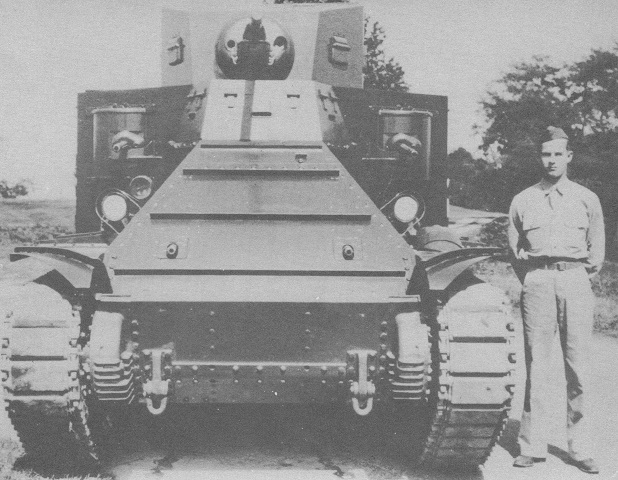
The turret on the M2A1 featured vertical sides to increase working room The bullet splash deflectors on the hull front slope and rotor shields and sights on the sponson machine guns are also readily visible. The M2 family featured cooling fins on the final drive housings; these were dropped when the medium tank M3 was designed. (Picture from Development of Armored Vehicles, volume 1: Tanks.)
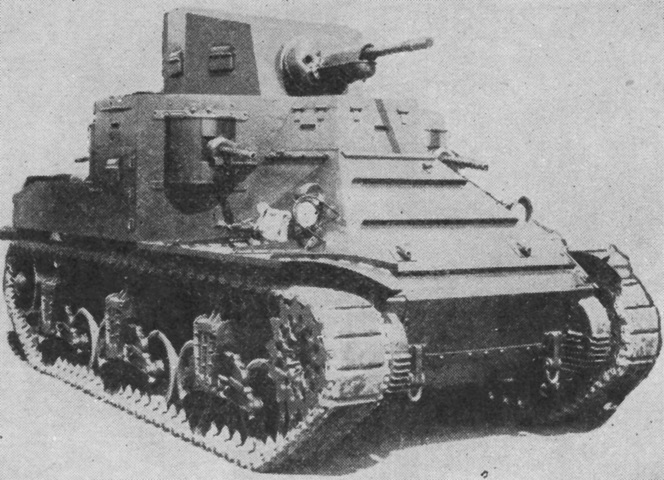
The armor protection of the 37mm gun's recoil mechanism can be better seen from this angle. (Picture from FM 30-40 C1 Military Intelligence Identification of United States Armored Vehicles.)

The turret had a single hatch door at the left rear corner that opened to the right, and the hull roof hatches are open on this tank as well. Several fuel or water cans are stowed at the superstructure rear. (Picture from Weapon Mounts for Secondary Armament.)
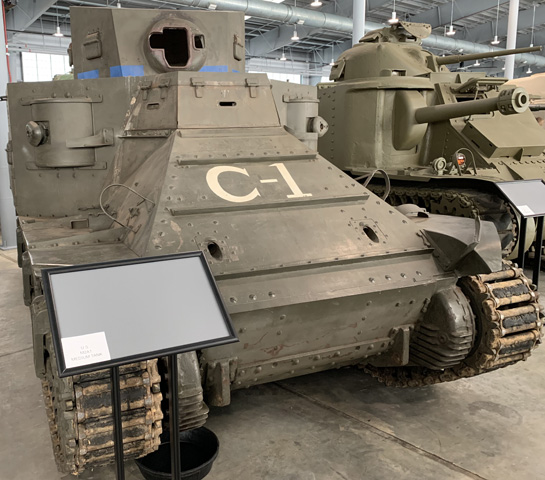
No armament is present in this image, and the turret's gun mount is also absent, presenting a view of the aperture for the gun and sighting telescope. The rubber on the tracks has worn away.
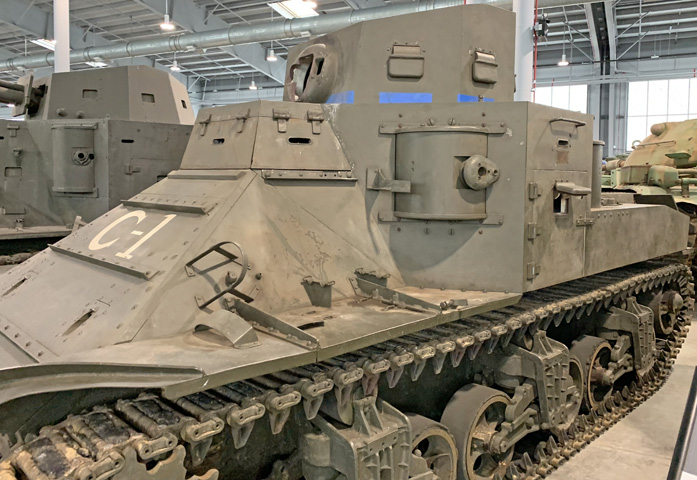
Seen from the opposite side, the pistol port in the hull side door is ajar. The pistol ports were redesigned from internal shutters to outward-opening flaps. Machine gun tripods and pioneer tools would be stowed on the fenders.
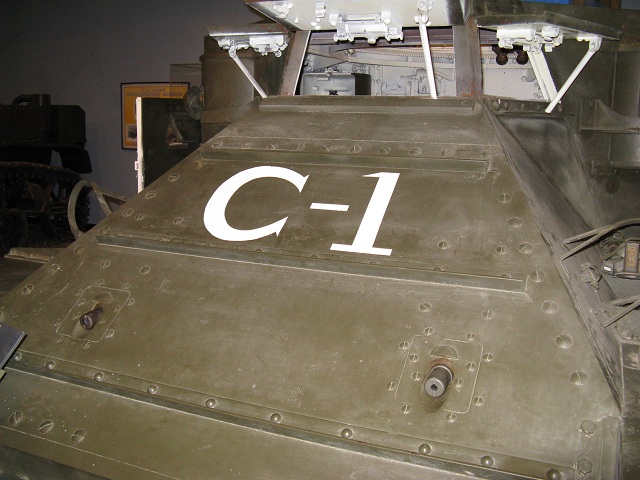
A closer look at the hull machine guns is provided here. The driver's hatches are open, and the riveted construction of the tank is readily apparent.

The left-side bow machine gun aperture is isolated in this image. One of the splash guards runs across the bottom of the picture.

A detached upper front hull plate is seen from the inboard side. The two equilibrated hull machine gun cradles were controlled by one elevation lever and individual firing switches. The captured spherical segments through which the machine guns protruded are also visible. (Picture from Weapon Mounts for Secondary Armament.)
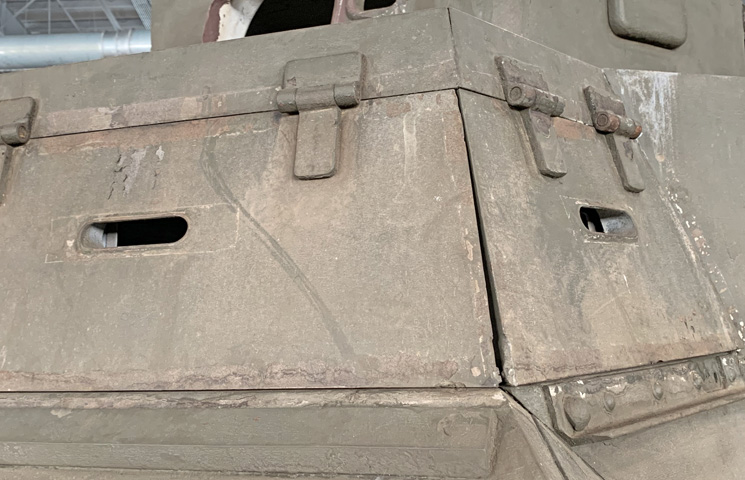
The driver's front and left doors are shown. Internal protection was provided for the vision slots.
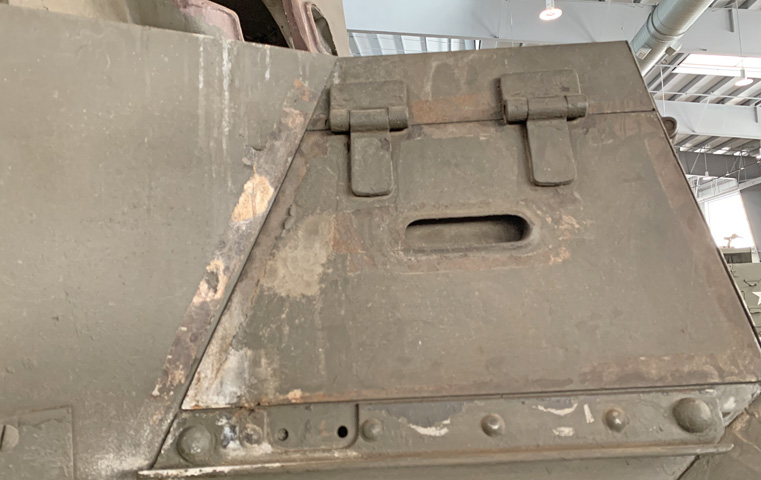
The vision slot in the right-side driver's door is sealed by an internal shutter. Note the cutout near the rear of the splash guard under the door that accommodated the post that held the door in the open position.

The new design of pistol port can be seen in the closed position in the hull side door.

The driver's hatches are open on this M2A1, and the sponson door is being used by the mannequin. The replica 37mm gun and mount are lacking the characteristic armor shield usually found on the M2A1, but the sponson machine gun rotor shields are fitted.
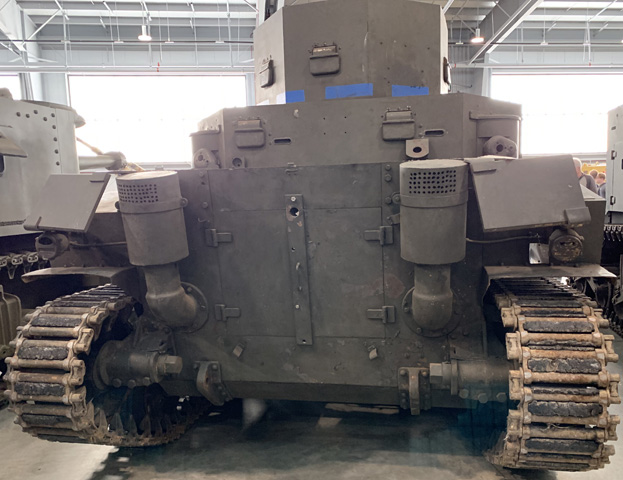
Seen from the rear, the production M2A1-type turret replaced the rear door with one in the roof.
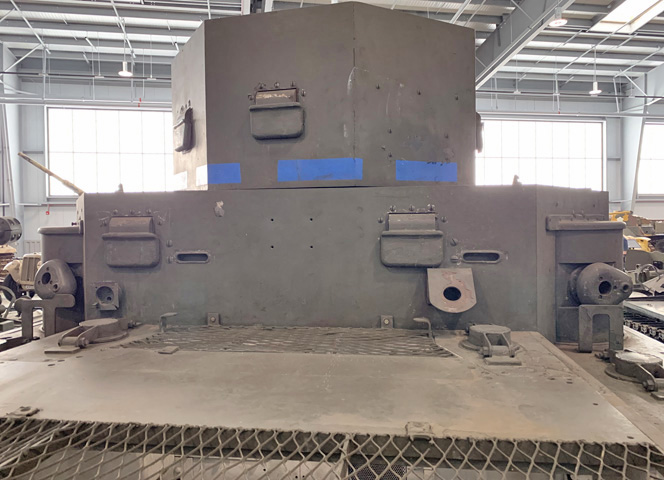
A closer look at the superstructure rear shows the pistol ports, vision slots, and sponson machine gun shields. Screens protect air intakes in the engine deck, and fuel filler covers can also be seen. Interrupters were mounted below the machine guns to prevent firing on the rear of the tank.
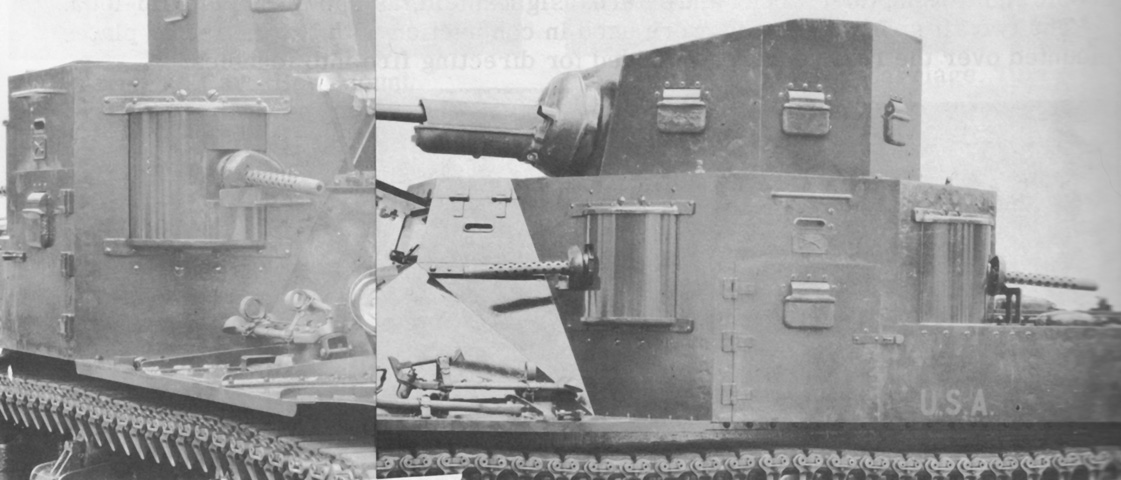
The sponson machine gun rotors now featured shields over the ball mount and sighting aperture. (Picture from Weapon Mounts for Secondary Armament.)

Seen here are the right front sponson machine gun rotor and its protective shield covering both the gun's and the sighting apertures in the rotor.
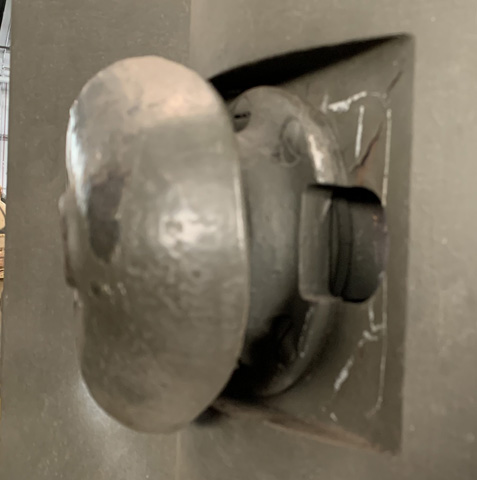
A closer look at the same machine gun mount and the sight aperture behind the shield is provided here.

A sponson machine gun mount is seen from the inside. A telescope with a full head rest was used, and the gun mount featured a shoulder stock and secondary trigger handle under the gun. A travel lock is visible on the right side of the gun. (Picture from Weapon Mounts for Secondary Armament.)
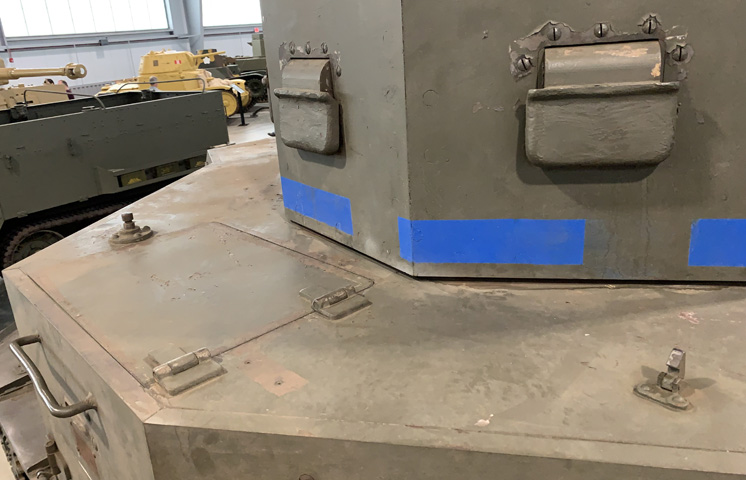
The door for the left-side antiaircraft machine gun mount is shown here. In the M2A1, both antiaircraft machine gun mount doors opened to the rear. Details of the turret pistol port covers can also be seen.
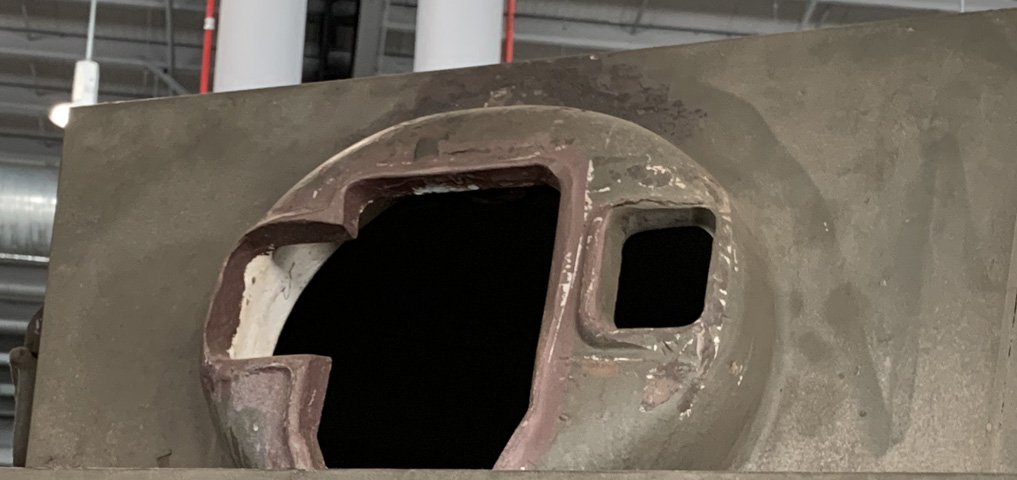
The openings for the 37mm gun and the telescopic sight are visible with the gun and shield removed.
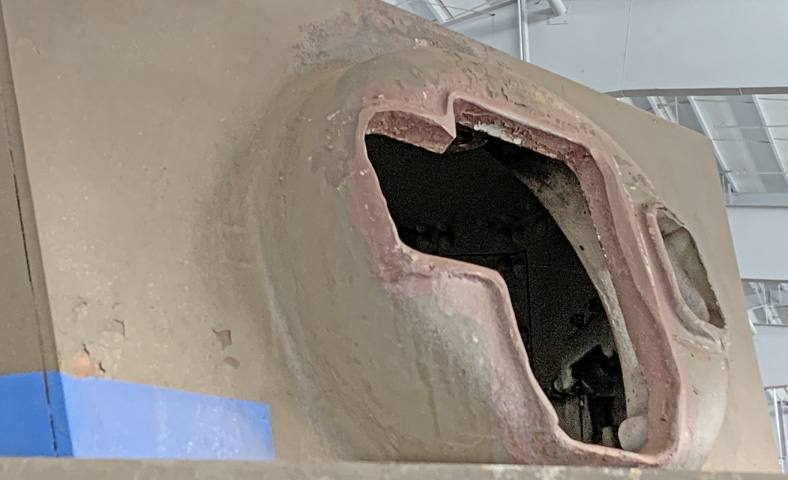
The thickness of the turret armor can be gleaned from this image. A pistol port can just be made out in the background.
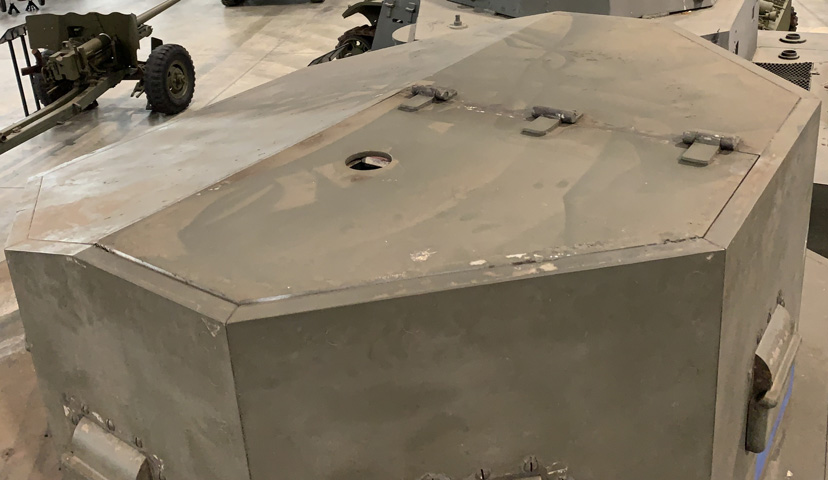
The door in the turret roof's left rear corner opened to the right, and a hole for signaling was provided.
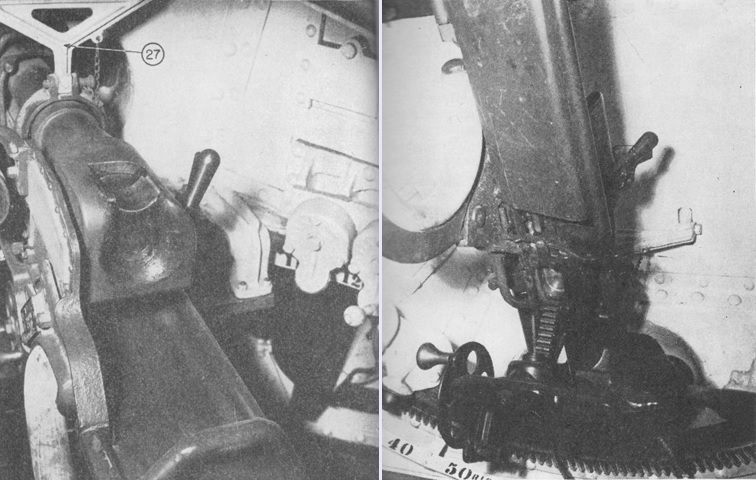
The 37mm gun in the gun mount M19 is seen from the upper left and lower right, respectively. The elevation handwheel and arc are visible from below; in the upper view the number 27 is pointing to the traveling lock, which is in the locked position. Note the absence of a coaxial machine gun, the pistol port in the turret wall to the right of the gun, and the indexing numbers painted around the circumference of the turret ring. Length of recoil in the mount M19 was 6-8" (15-20cm), and 5 pints (2.4L) of oil were contained in the cradle. (Picture from FM 23-80 37-mm Gun, Tank, M5 (Mounted in Tanks).)
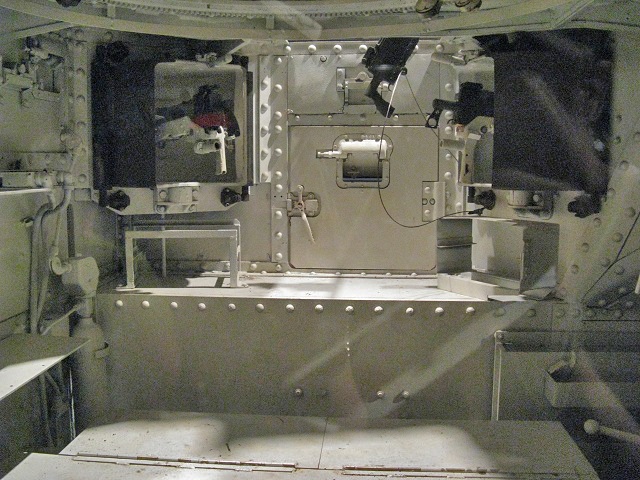
In this view we are looking into the fighting compartment from the starboard hull door. The port hull door is directly across, and the turret ring can be seen at the top of the image. The front and rear machine gun rotors are painted to match the outside of the tank, and the upward-aiming antiaircraft machine gun can also be seen.
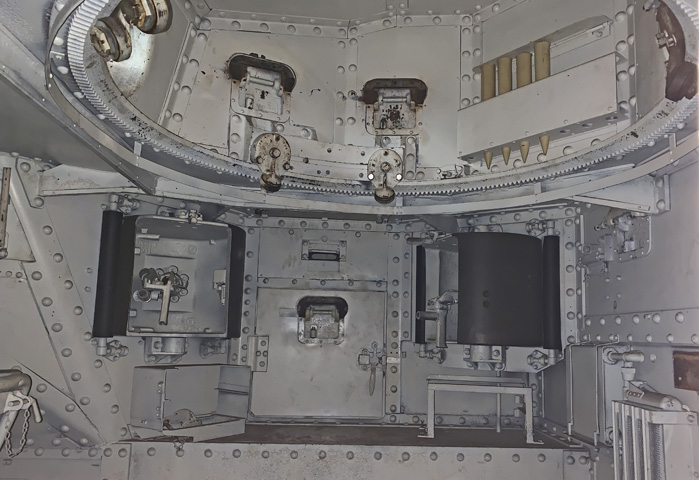
A higher look at the interior reveals details of the turret, including ammunition stowage and pistol ports. The 37mm ammunition rack precluded a pistol port on that face of the turret.
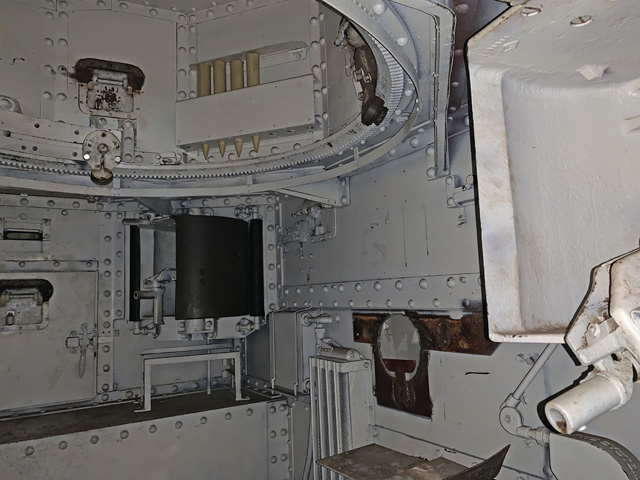
Looking towards the rear of the fighting compartment, the engine oil cooler is in the right rear corner. Although the drivetrain has been removed from this tank, the aperture in the firewall for the propeller shaft can be seen.
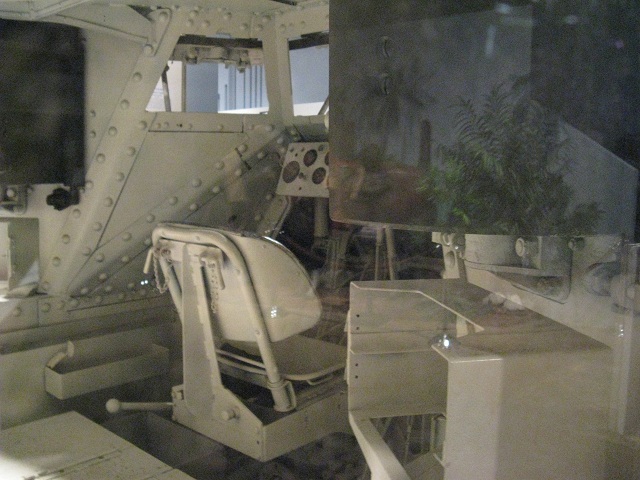
The front of the fighting compartment is shown here, including the driver's position directly on top of the tank's transmission. Two closely-spaced steering levers can be seen in front of his chair, and the position of his instrument cluster is apparent. The forward machine gun rotors can be seen flanking the driver. Riveting fell by the wayside in part because the rivets could come apart and ricochet around the interior of a tank when they were struck by enemy fire. Noting the number of rivets needed to construct a tank, this would not be a trivial concern.
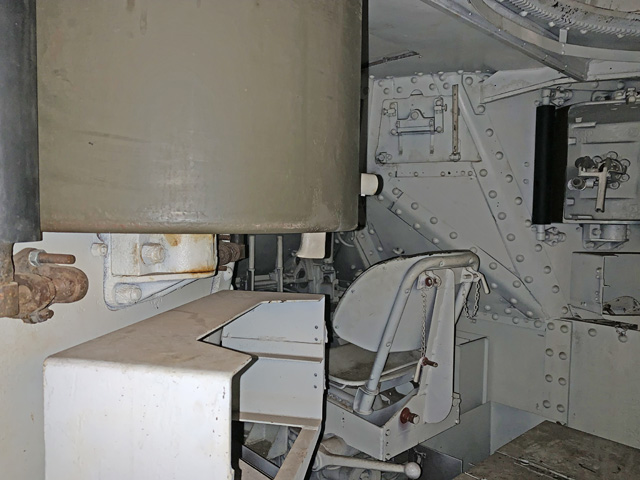
The driver's closed door on the far side of the tank is seen closed. Note the vision slot controls and the post that held the door in place when open.

The cooling fins on the final drive housing are highlighted in this image. Note that the rubber blocks on the tracks have been worn away on this vehicle.
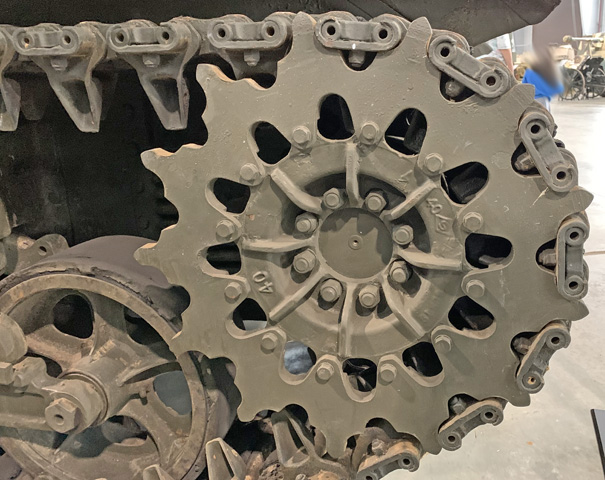
The construction of the drive sprocket can be seen here, as well as its interaction of the track guides.

Although sagging with age, the vertical volute springs are visible to the rear of the road wheel, and the return roller can be seen atop the bogie.
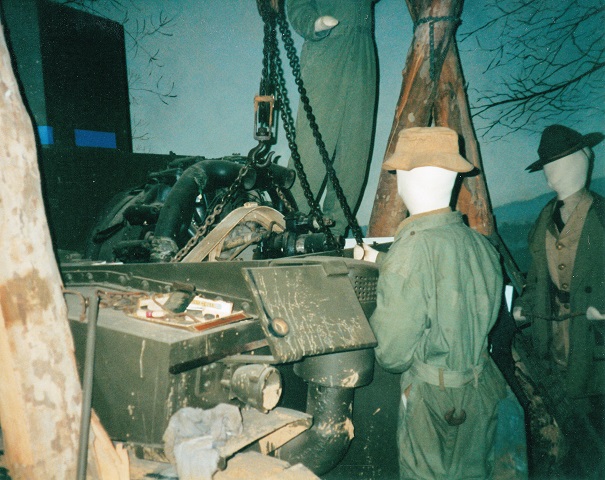
The crew in this display are removing the Wright R975 EC2 engine. There were also large hinged access doors in the hull rear plate for engine work. One of the mud-smeared bullet deflectors can be seen above the left taillight.

A closer view of the radial engine is shown here, as well as details of the antenna mount.
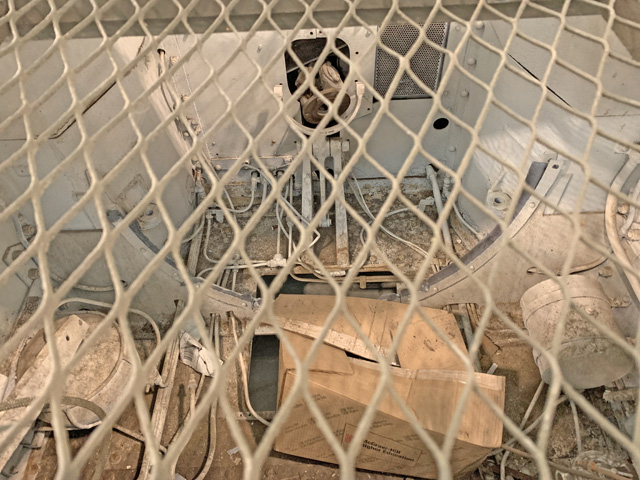
This view is peering into the empty engine compartment. The cardboard box sits atop open access panels, and the universal joint for the propeller shaft can be seen crossing through the bulkhead. The screen to its right reveals the position of the engine's oil cooler in the fighting compartment, and the semicircular clutch yoke straddles the universal joint. The sump tank is in a horizontal orientation on the lower right, and the pressure tank is installed on the opposite side.

The underside of the hull is seen here from the front.
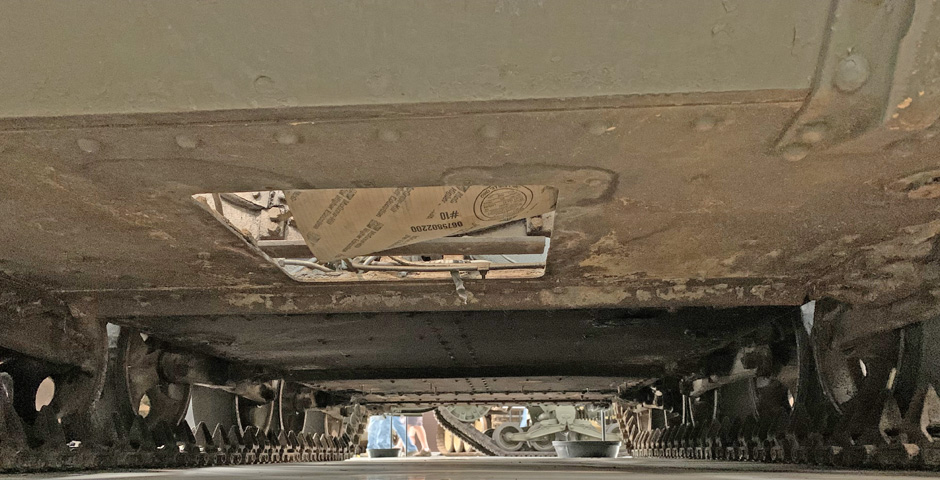
The underside of the hull is seen from the rear. The engine access aperture is bisected by the engine mount.

Construction and attachment of the right-side engine exhaust is shown here.